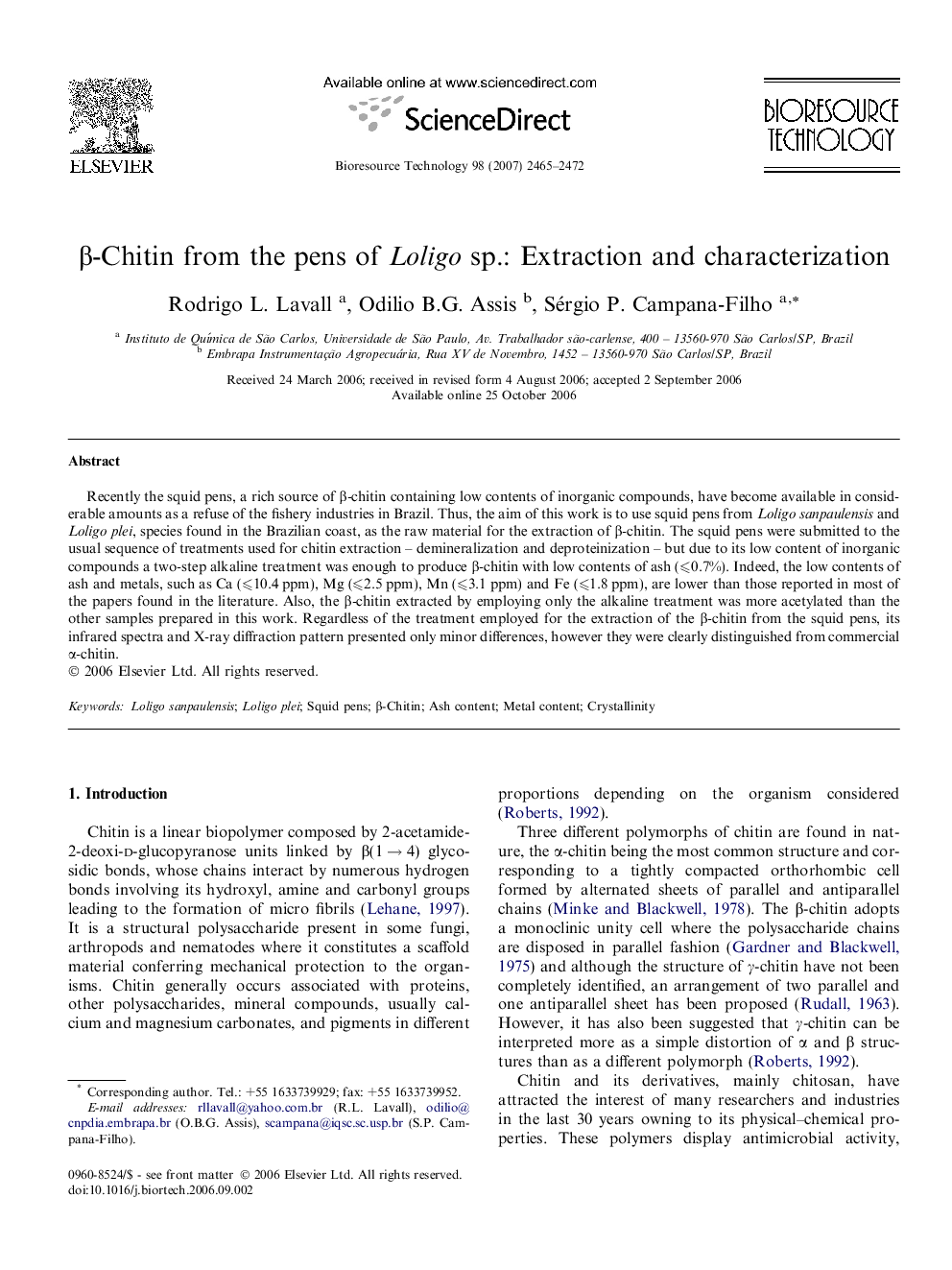| Article ID | Journal | Published Year | Pages | File Type |
|---|---|---|---|---|
| 685201 | Bioresource Technology | 2007 | 8 Pages |
Recently the squid pens, a rich source of β-chitin containing low contents of inorganic compounds, have become available in considerable amounts as a refuse of the fishery industries in Brazil. Thus, the aim of this work is to use squid pens from Loligo sanpaulensis and Loligo plei, species found in the Brazilian coast, as the raw material for the extraction of β-chitin. The squid pens were submitted to the usual sequence of treatments used for chitin extraction – demineralization and deproteinization – but due to its low content of inorganic compounds a two-step alkaline treatment was enough to produce β-chitin with low contents of ash (⩽0.7%). Indeed, the low contents of ash and metals, such as Ca (⩽10.4 ppm), Mg (⩽2.5 ppm), Mn (⩽3.1 ppm) and Fe (⩽1.8 ppm), are lower than those reported in most of the papers found in the literature. Also, the β-chitin extracted by employing only the alkaline treatment was more acetylated than the other samples prepared in this work. Regardless of the treatment employed for the extraction of the β-chitin from the squid pens, its infrared spectra and X-ray diffraction pattern presented only minor differences, however they were clearly distinguished from commercial α-chitin.
